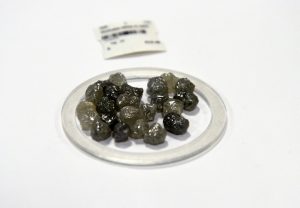- May 17, 2021
- Posted by: adminz
- Category: News

A year of lockdown restrictions took a heavy toll on diamond prices, but recovering demand is rekindling optimism in the industry.
After a tough year, the African diamond industry is finally looking to the future with optimism again. In 2019, restrictions brought about by the Covid-19 pandemic decimated consumer markets, paralysed supply chains and led to the closure of mines.
Companies were forced to slash investment and weigh up mass retrenchments. But now a year of supply restrictions has reversed a market glut and diamond companies are spearheading the vaccine drive in mining communities.
Prices crash
Diamond prices crashed 15-20% in April 2020 as travel restrictions and lockdowns bore down. While some African mines from Lesotho to Zimbabwe remained operational, others shut at the height of national lockdowns to fend off pressure on fragile healthcare systems.
The consumer market was similarly hit – diamond retailers, including Tiffany’s and De Beers, closed boutiques in Hong Kong, London and New York, while border restrictions halted gem shows.

In mid-January prices had tanked as China, the world’s second largest consumer of polished diamonds, and its East Asian neighbours temporarily closed around 75% of jewellery stores, global diamond analyst Paul Zimnisky notes.
As the coronavirus spread from China, diamond trading and related activity was halted in the industry’s important regional trade hubs. The world centre of diamond cutting and polishing, Surat in India, was shut down when the city closed its factories in March, causing stockpiles to grow. As a result, India’s rough imports fell from $1.5bn in February to $1m in April, according to data from the Gem and Jewellery Export Promotion Council.
In Africa, which accounts for up to 50% of world supply and is home to major producers such as Botswana, Democratic Republic of Congo and Angola, the industry was devastated.
In Botswana, the biggest African earner from its diamond production, eight months of border closures shut out the “sight-holders” who flock from around the world 10 times a year to inspect De Beers’ latest haul in Gaborone. The economy contracted by 9.6% in 2020 according to the IMF.
In Guinea, whose Banankoro-Sefadou region in the east is laced with rich deposits of precious stones, diamond exports dropped from 270,000 carats in Q1 2019 to a paltry 39,000 carats in Q1 2020, according to the National Bureau of Expertise (BNE), which oversees the country’s exports.
Bouncing back
But now, the global diamond industry is not only regaining its sparkle, it has bounced back stronger than before the pandemic, Zimnisky says.
“Now you’re seeing demand return and diamond prices are higher than they were before the pandemic, that translates to more revenues for countries with exposure to diamonds like Botswana.”
The comeback began as Indian cutters and polishers reopened last year, kick-starting the global supply chain and nursing a recovery in the second half of 2020. Diamond-producing economies are braced for a rebound. Botswana’s economy is predicted to grow by 7.7% this year after the country reopened its borders in December.
Paradoxically, the pandemic’s suspension of mining operations has wiped out a diamond supply glut that has amassed over the last decade, making the global diamond industry glitter brighter than ever.
After peaking in 2017, rough diamond production had declined by about 5% per year. Yet 2020 saw a 20% decrease compared with the previous year, data collected by business consultancy Bain & Company finds.
“Now we’re starting to see supply shortages – we started to see that before the pandemic accelerated that problem. The oversupplied market was the biggest problem for the industry over the last decade,” says Zimnisky.
As economies rebound under the impact of vaccines and stores reopen, a recovering consumer economy has unleashed pent-up demand.
“This is probably the most enthusiastic I’ve seen this industry in quite some time. The sentiment is quite strong,” concludes Zimnisky. – african.business.com

